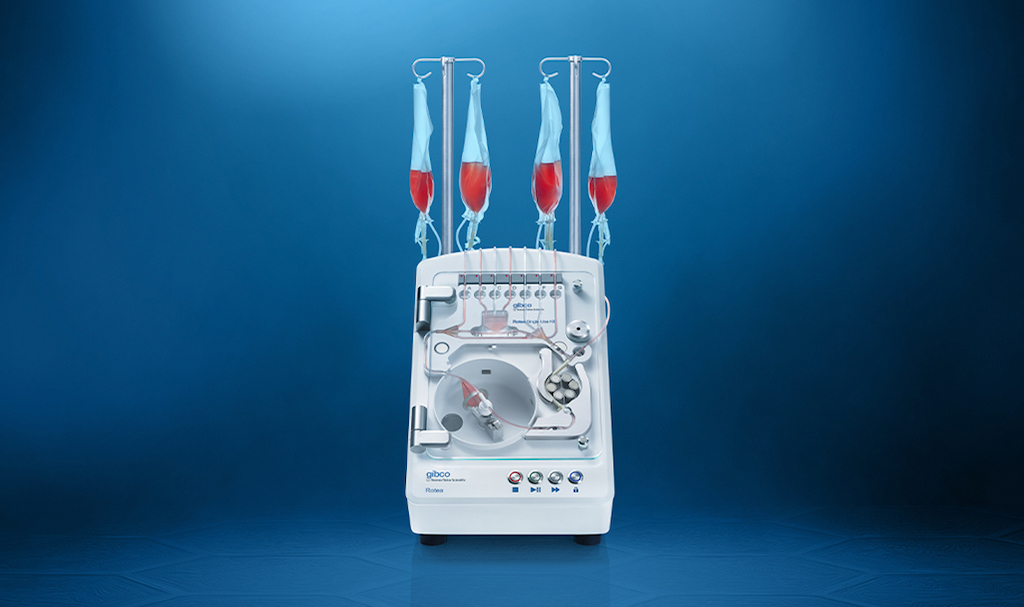[ad_1]

AsianScientist (Jan. 12, 2021) – From bone marrow transplants to innovative cancer treatments, cell therapies have found a wide range of applications since they first originated in the twentieth century. Decades on, the field continues to flourish: as of mid-2020, around 675 clinical trials are underway globally for cell therapy and cell-based immune oncology, according to the Alliance for Regenerative Medicine.
Despite their promise, few cell therapies in development are commercially available. Factors such as safety and efficacy requirements, difficulties in transferring research protocols to manufacturing processes and lack of scalability—on top of the high costs of facilities, labor and equipment—have all hampered widespread translation.
Seeking to overcome these pain points, US-based life science firm Thermo Fisher Scientific recently unveiled a new product for cell therapy manufacturing: the Gibco™ CTS™ Rotea Counterflow Centrifugation System.
Meet the CTS Rotea system
Launched in October 2020, the CTS Rotea system is a modular, closed cell processing system that enables scalable and cost-effective cell therapy development and manufacturing. The instrument’s innovative modular design allows for time-consuming processes to be decoupled from rapid ones, improving the utilization of facility and equipment and reducing the capital investment required throughout the manufacturing process.
As the first Gibco-branded instrument for cell therapy processing applications, the new instrument can easily integrate into and even accelerate workflows by allowing researchers to use the same system from research all the way through GMP clinical development and commercial manufacturing.
In doing so, the CTS Rotea system lowers the risk of process delays associated with changing systems. Its sterile, closed and single-use kits enable cell processing even in grade C clean rooms, further facilitating cost-effective transfer and process scaling.
Modular, multifunctional and made-for-use
Even as the CTS Rotea system promises remarkable time and cost savings, it continues to maintain high cell recovery and viability standards. Using Thermo Fisher’s proprietary technology, the system can process low to mid-range input volumes and deliver output volumes as low as 5 mL of concentrate—all while preserving cell viability with a recovery yield of over 95 percent.
Combined, the instrument, closed sterile single-use kit and user-programmable software that make up the CTS Rotea system allow researchers to support a broad range of protocols for cell separation, washing and concentration, across a variety of cell types. With its multifunctionality and process flexibility, the system will be a much-needed boost for researchers aiming to move their cell therapy from bench to bedside in a cost-effective and scalable manner.
“It is notoriously difficult for cell therapies to advance from the research stage into the marketplace,” said Dr. Amy Butler, President of the Biosciences Division at Thermo Fisher Scientific. “Our goal is to help advance the development of cell therapies, including exciting new CAR-T cell therapies and even potential cell therapies to repair lung damage caused by COVID-19. The CTS Rotea system will help researchers overcome manufacturing hurdles and bring the vast potential of cell therapies to more patients.”
For more information on the CTS Rotea Counterflow Centrifugation System, please visit the company website at www.thermofisher.com/rotea.
Asian Scientist Magazine is a media partner of Thermo Fisher Scientific.
———
Copyright: Asian Scientist Magazine; Photo: Thermo Fisher Scientific.
Disclaimer: This article does not necessarily reflect the views of AsianScientist or its staff.
[ad_2]
Source link